For the upcoming Easter holidays we set out to uncover Easter egg coatings with FTIR spectroscopy using ALPHA‘s reflectance and ATR modules.
Easter is just around the corner, and you know what that means in many parts of the world: It’s time for colorful Easter eggs! Egg dyeing in springtime is a common thing in many cultures to celebrate new beginnings.
The earliest evidence of decorated eggs dates back to ancient Persia around 2,500 years ago. And even nowadays spring is the perfect time to channel your inner artist and create some egg-cellent decorations.

But have you ever asked yourself why the eggs you painstakingly color at home cannot compete with the shiny eggs from the supermarket? We set out to uncover this Easter mystery for you!
Egg shell analysis with FTIR
To do this, we bought uncolored and colored eggs at the supermarket. In order to have a comparison we carried out an FTIR analysis of both egg types.
The shiny surface allows measurement of the outer shell without damaging the shell using an FTIR reflectance measurement. For this the egg is simply held in front of the ALPHA with a front reflection module and we get a result in the form of a reflectance FTIR spectra
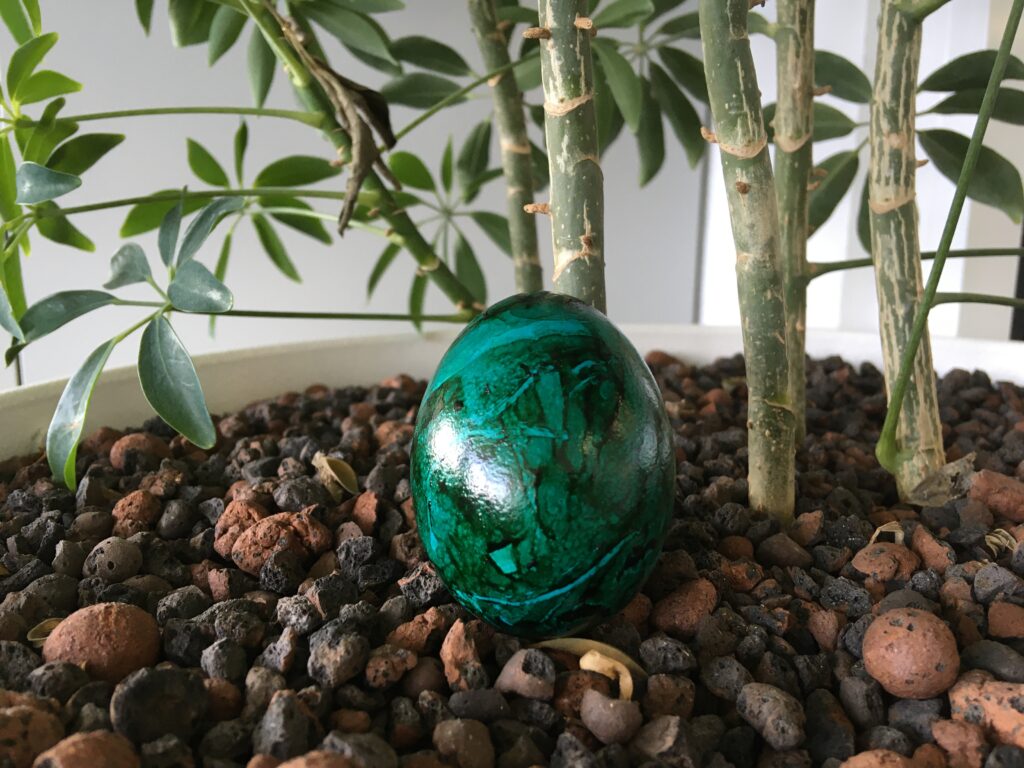
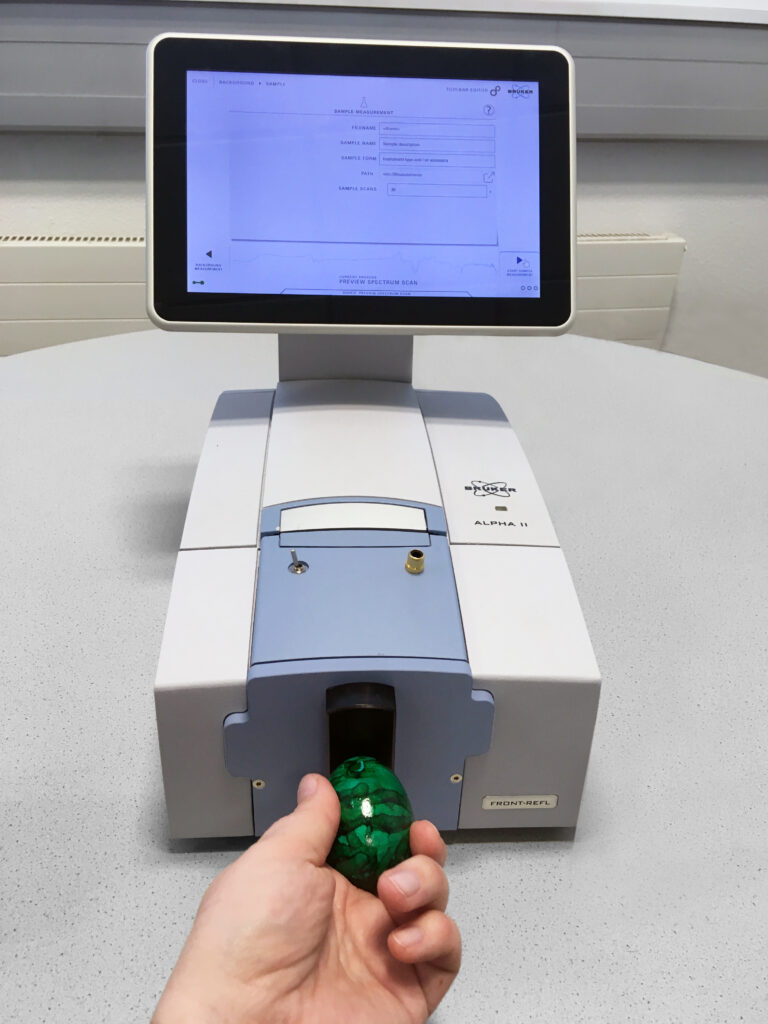
To get the best spectral quality, we decided to also analyze the shell using the surface sensitive ATR technique. We quickly switched from the reflection to the diamond ATR QuickSnap module and peeled the egg. The eggshell (1) was then placed with the colored side down (2) onto the ATR crystal and the pressure stamp applied carefully.
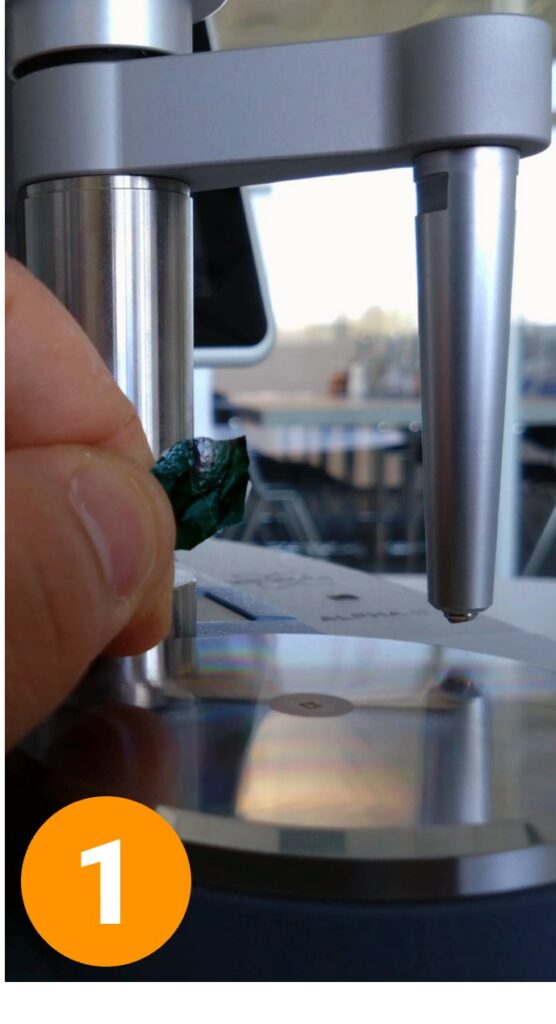
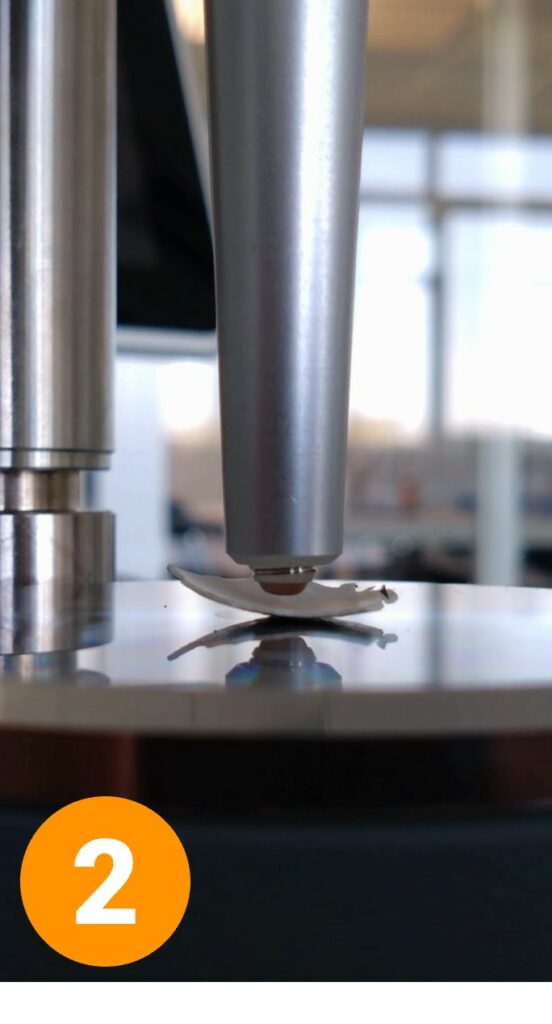

Following that, we used the „Identification“ mode with both setups to determine the composition of our samples with the help of our libraries.
Easter egg coating
As expected, the library search for the uncolored eggs revealed that they are simply made of calcite and protein. The spectra for the dyed eggs showed a different picture.
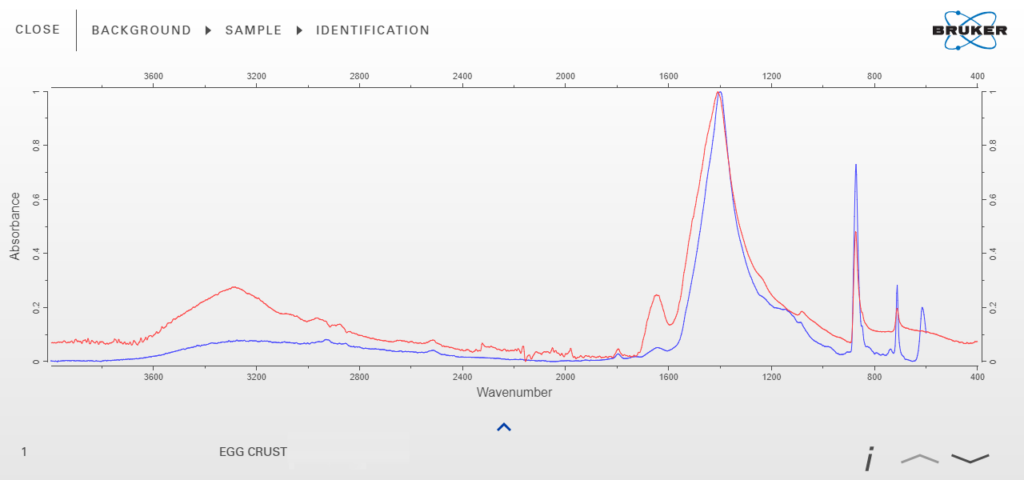
For the shiny colored eggs, however, the coating was identified as shellac. Shellac is a natural resin secreted by the female lac bug and is commonly used as a coating or varnish for a variety of applications.
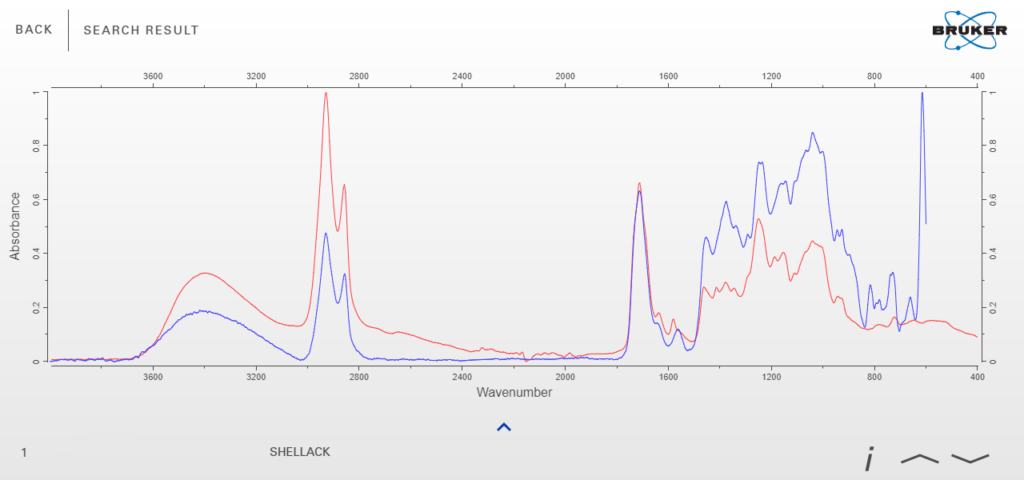
You now might ask, if this resin is harmful but thankfully it is generally recognized as safe in foods. Nevertheless, this is no recommendation to buy pre-colored eggs instead of dyeing them yourself.
Store-bought colored eggs often do not give an expiration date or information of the origin of the eggs is omitted. And on top of that, harmful azo dyes are today still used to color eggs. So doing it yourself might be the way to go.
And if you don’t want to miss the bright shiny eggs, here’s an old housewife hack from Swabia. After coloring the eggs, simply rub them with a pork rind or a little sunflower oil. Shiny results guaranteed.
Voila!
In case you want to know more about FTIR in food analysis check out our blog article about Cocoa powder analysis:
We wish you Happy Easter Holidays!








